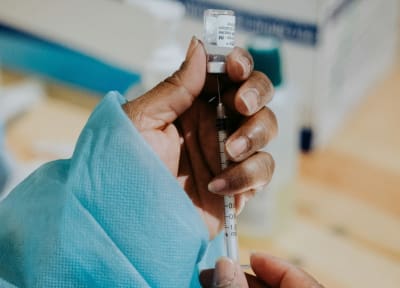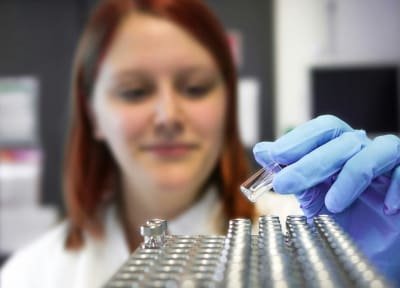How Vaccines Work
Explore how vaccines safely give your immune system a head start against viruses, bacteria, and other pathogens.
On This Page:
Overview
Vaccines are one of the most important advances in the history of medicine, preventing millions of deaths from diseases every year. Thanks to vaccines, once-feared diseases such as polio and measles are now rarer threats.
Vaccines give the immune system a head start against viruses, bacteria, and other pathogens that cause infectious diseases. It can take the body a few weeks to respond to an infection, and some pathogens can cause serious illness in that time. Vaccines are a way to train the immune system and establish memory ahead of time without the risk of infection, providing effective immunization against specific diseases.
Key Points
- A vaccine trains the immune system to fight and remember pathogens by exposing the immune system to a harmless form of a pathogen, a part of a pathogen, or the instructions for your cells to make a part of a pathogen.
- Vaccination is the act of getting a vaccine, usually as a shot.
- Immunization is the process of becoming immune to (protected against) a disease.
Vaccines Induce Immune Responses
Vaccines train the immune system to respond to pathogens without the dangerous side-effects of the disease. They do this by providing an antigen for a specific disease that the immune system responds to by producing antibodies. Different types of vaccines use different forms of antigen, which are outlined below.
When exposed to an antigen, antigen-specific antibodies are produced. These antibodies are remembered by memory immune cells, which remain alive even after the pathogen is defeated. Now, if the body is exposed to the same pathogen more than once, the antibody response is faster and more effective than the first time because the memory cells already know how to make antibodies. This means that if the person is exposed to the dangerous pathogen in the future, their immune system will be able to respond immediately, protecting against disease.
Types of Vaccines
The different types of vaccines all work to train the immune system to respond when they encounter the pathogen.
Live attenuated vaccines
These vaccines use a weakened (attenuated) form of the germ. The weakened germs induce an immune response but do not cause disease. Since these vaccines closely resemble wild infection, they induce strong immune protection. However, because they contain a small amount of the weakened germ, not everyone can receive them, such as people with weakened immune systems. Examples of these vaccines include:
- Measles, mumps, rubella (MMR)
- Chickenpox
- Rotavirus
Subunit, recombinant, polysaccharide, and conjugate vaccines
Some vaccines are composed of a protein normally made by microbes—such as bacteria and viruses—alongside an added substance, or adjuvant, that tricks the immune system into responding like the vaccine is an infection. Examples of these types of vaccines include:
- Hepatitis B
- HPV (Human papillomavirus)
- Whooping Cough
- Pneumococcal disease
- Meningococcal disease
- Shingles
Inactivated vaccines
Other vaccines carry disabled versions of viruses that cannot cause disease but can cause an immune response. Examples of these types of vaccines:
- Influenza, or “flu,”
- Hepatitis A
- Polio
- Rabies
mRNA Vaccines
mRNA (messenger RNA) vaccines carry information that allows cells to produce a target protein from the microbe to be the antigen that your immune system recognizes and reacts to. Examples of these types of vaccines:
- COVID-19
Sources
- Jain, A., Marshall, J., Buikema, A., Bancroft, T., Kelly, J. P., & Newschaffer, C. J. (2015). Autism Occurrence by MMR Vaccine Status Among US Children With Older Siblings With and Without Autism. JAMA, 313(15), 1534. https://doi.org/10.1001/jama.2015.3077
- Taylor, B., Miller, E., Farrington, Cp., Petropoulos, M.-C., Favot-Mayaud, I., Li, J., & Waight, P. A. (1999). Autism and measles, mumps, and rubella vaccine: no epidemiological evidence for a causal association. The Lancet, 353(9169), 2026–2029. https://doi.org/10.1016/s0140-6736(99)01239-8
- Madsen, K. M., Hviid, A., Vestergaard, M., Schendel, D., Wohlfahrt, J., Thorsen, P., Olsen, J., & Melbye, M. (2002). A Population-Based Study of Measles, Mumps, and Rubella Vaccination and Autism. New England Journal of Medicine, 347(19), 1477–1482. https://doi.org/10.1056/nejmoa021134
Related Topics
Downloads
Latest News


